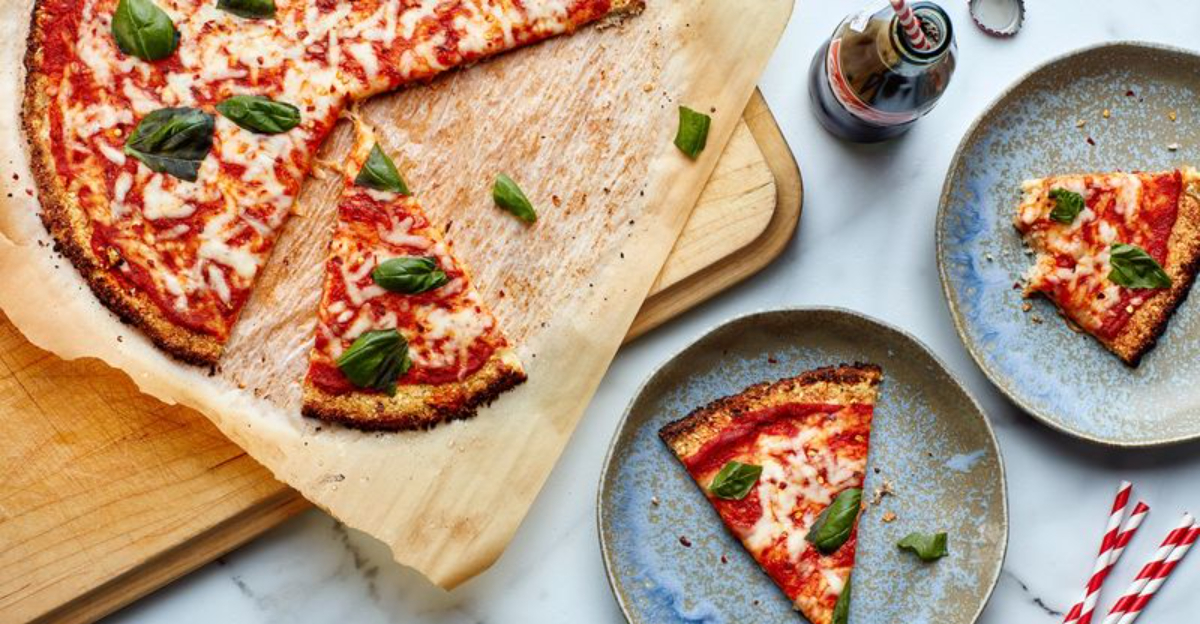15 Trendy Foods That Will Probably Disappear In The Next 20 Years (Thankfully)

Remember when rainbow bagels and charcoal ice cream dominated our social feeds? Food trends tend to rise and fade faster than you can say “avocado toast.”
As someone who’s watched these culinary fads unfold with a mix of curiosity and amusement, I have to admit, it’s a bit of a relief that some of them are unlikely to stand the test of time.
While a few trends add fun and creativity to our plates, others feel more like fleeting gimmicks than lasting contributions to food culture. Here are 15 trendy foods that probably won’t survive the next two decades, and why that’s okay.
1. Avocado Toast That Costs More Than Your Rent
I once spent $18 on avocado toast at a hipster café, and immediately questioned all my life choices. The astronomical water requirements for growing avocados (about 72 gallons per pound!) make them environmental nightmares in drought-prone regions like California.
Climate change is making consistent avocado production increasingly difficult. Farmers are already seeing reduced yields and quality issues as temperatures rise and water becomes scarcer.
Between the unsustainable growing conditions and the inevitable consumer burnout from seeing it on every brunch menu since 2015, this overpriced toast topping is headed for the history books.
2. Charcoal-Infused Everything
My stomach still hasn’t forgiven me for that activated charcoal latte I tried in 2018. Black foods became Instagram darlings despite tasting exactly like their regular counterparts, just with an unnerving color that stained everything it touched.
Health authorities have already started cracking down on activated charcoal in foods because it can interfere with medications. Plus, the whole “detox” claim behind these products has been thoroughly debunked by medical professionals.
The novelty of having black teeth after your morning smoothie wears off quickly. This trend is already fading as consumers become more informed about the lack of benefits.
3. Unicorn-Colored Food With Glitter
Rainbow bagels, unicorn frappuccinos, and galaxy donuts, I’ve tried them all in the name of social media content. These technicolor treats require obscene amounts of artificial food coloring and often taste nothing like their vibrant appearance promises.
Food safety experts have raised concerns about some decorative elements like non-edible glitters that can contain microplastics or metal compounds. Many countries are already restricting certain food dyes linked to behavioral issues in children.
As consumers become more ingredient-conscious and the novelty wears off, these impractical, sugar-laden rainbow foods will fade faster than their food coloring stains on your tongue.
4. Cauliflower Pretending To Be Everything Else
Cauliflower pizza, cauliflower rice, cauliflower wings, I’ve watched this humble vegetable masquerade as every food imaginable. While initially a clever low-carb solution, the cauliflower-everything trend has spiraled into absurdity.
Monocropping to meet cauliflower demand creates sustainability issues. Large-scale cauliflower farming requires significant water resources, and the processing needed to transform it into convincing substitutes often negates many health benefits.
Future generations will laugh at our desperate attempts to make vegetables mimic comfort foods instead of just enjoying them for what they are. The pendulum will swing back to appreciating authentic ingredients rather than vegetable imposters.
5. CBD-Infused Snacks That Do Absolutely Nothing
I once paid $9 for a CBD-infused sparkling water that promised relaxation but delivered nothing except an odd aftertaste. The CBD food craze exploded before regulation could catch up, resulting in products with questionable efficacy and wildly inconsistent dosing.
Regulatory agencies worldwide are finally establishing guidelines that will make most current CBD snacks non-compliant. Studies increasingly show that the minuscule amounts in most food products provide no measurable benefits.
As the cannabis industry matures and consumers become more educated, these overpriced, underdosed novelty items will disappear. People seeking actual benefits will turn to properly regulated products with verified potency.
6. Cloud Eggs That Look Better Than They Taste
Remember spending 20 minutes carefully separating eggs to create those fluffy white clouds with a sunny yolk center? I did this exactly once before deciding the bland taste wasn’t worth the effort or the Instagram likes.
Cloud eggs represent peak food-as-performance-art rather than actual culinary improvement. The technique separates the nutrients in the egg white from the yolk, creating an inferior eating experience despite the impressive appearance.
As social media platforms evolve beyond static food photos and consumers seek authenticity, these high-effort, low-reward dishes will float away. Future generations will wonder why we ever thought deconstructing a perfectly good egg was a good idea.
7. Oversized Milkshakes With An Entire Cake On Top
I still have nightmares about the “freakshake” I ordered that arrived with a slice of cheesecake, three cookies, and a candy bar balanced precariously on top. These monstrosities emerged as restaurants competed for social media attention, regardless of practicality or edibility.
The excessive food waste generated by these creations is becoming increasingly problematic as environmental consciousness grows. Most people photograph the drink but can’t possibly consume all the toppings, leading to massive amounts of discarded food.
As sustainability becomes more important to younger consumers, these wasteful showpieces will seem as outdated and tacky as fondue fountains do today. Good riddance to impossible-to-eat desserts designed for likes rather than enjoyment.
8. Kale In Places Kale Doesn’t Belong
My lowest culinary moment was choking down a kale smoothie that tasted like lawn clippings because a wellness influencer promised it would change my life. The bitter leafy green infiltrated everything from chips to chocolate bars in the 2010s despite its challenging flavor profile.
Commercial kale farming has expanded so rapidly that crop rotation and sustainable practices have been neglected. The resulting soil depletion and pest issues are already causing quality problems in major growing regions.
Future generations will wonder why we forced this nutrient-dense but difficult vegetable into every possible food instead of enjoying it in appropriate dishes. The kale-everywhere trend will wilt as consumers embrace more diverse and culturally appropriate greens.
9. Rolled Ice Cream That Takes Forever To Make
I once waited 25 minutes in line to watch someone laboriously scrape ice cream into rolls for a dessert that melted before I found a place to sit. This Thai street food technique became a worldwide phenomenon despite being entirely impractical for high-volume service.
The process requires specialized equipment and significantly more labor than traditional scooping. Many rolled ice cream shops have already closed as owners realize the economics don’t work outside of tourist-heavy areas where people will pay premium prices for the experience.
As the novelty wears off and consumers return to appreciating quality ingredients over tableside theater, this labor-intensive trend will melt away. The future belongs to ice cream that doesn’t require a 20-minute performance to serve.
10. Unnecessary Gold Leaf On Everything
I still regret the $100 I spent on a burger wrapped in gold leaf that tasted exactly like a regular burger. This trend of adding tasteless, expensive metal to food represents peak consumption-as-status-symbol with zero culinary value.
The environmental impact of decorative gold leaf is increasingly problematic. Mining precious metals requires extensive resources and often involves questionable labor practices, all for a purely decorative element that passes through the body unused.
As younger generations reject conspicuous consumption and embrace authenticity, these empty status symbols will lose their shine. Future food trends will focus on genuine quality and craftsmanship rather than literally gilding perfectly good dishes.
11. Overengineered Coffee Brewing Methods
My kitchen cupboard still houses an abandoned siphon coffee maker that looks like chemistry equipment and required a 15-minute tutorial to use. The specialty coffee world exploded with increasingly complex brewing devices that promised transcendent experiences but delivered marginal improvements at best.
Many of these methods require significant resources, from water waste to specialized single-use filters, making them environmentally questionable. The learning curve and time investment put them out of reach for everyday coffee consumption.
As climate change threatens coffee production globally, the focus will shift to sustainability rather than fetishizing elaborate brewing rituals. Simple, efficient methods that respect both the bean and the planet will prevail over Instagram-friendly coffee theater.
12. Foods Designed Solely For Social Media
I still cringe remembering how I waited two hours for a rainbow grilled cheese that photographed beautifully but tasted like plastic. Restaurants increasingly create dishes with social media shareability as the primary goal, often at the expense of flavor, texture, and practicality.
These gimmicky creations typically rely on excessive food coloring, structural elements that make eating difficult, or bizarre ingredient combinations that photograph well but taste terrible. The resources wasted on developing and marketing these novelty items could be better directed toward sustainable practices.
As digital natives mature, the appeal of sacrificing taste for likes will diminish. Future food trends will need to satisfy both the camera and the palate to survive.
13. Meal Replacement Shakes For People Who ‘Don’t Have Time To Eat’
My brief experiment with meal replacement shakes left me hungry, irritable, and questioning why I was drinking beige liquid instead of enjoying actual food. These products promised efficiency but delivered a joyless approximation of nutrition that ignored the cultural and social aspects of eating.
The environmental footprint of highly processed meal replacements often exceeds that of whole foods. The excessive packaging, processing, and transportation of shelf-stable products contribute significantly to their carbon footprint.
As work-life balance becomes a greater priority for younger generations, the glorification of being “too busy to eat” will fade. Future food innovations will enhance rather than replace the fundamental human experience of sharing meals.
14. Pumpkin Spice Invading Products That Should Be Left Alone
My pantry once contained pumpkin spice pasta that created one of the most confusing dinner experiences of my life. What started as a pleasant fall coffee flavor morphed into a marketing monster that infected everything from potato chips to chicken sausage.
The artificial pumpkin spice flavoring used in most products bears little resemblance to actual pumpkin or fresh spices. Many contain synthetic compounds and artificial colors that create an uncanny valley version of the comforting fall profile.
As seasonal eating and authentic flavors gain importance, this overextended flavor will retreat to appropriate applications. Future generations will wonder why we thought pumpkin spice hummus was ever a good idea.
15. Deconstructed Classics That Need No Deconstruction
I’ll never forget paying $24 for a “deconstructed key lime pie” that arrived as separate blobs of ingredients I had to mix myself. This pretentious trend took perfectly good dishes and dismantled them in the name of culinary artistry, forcing diners to reassemble their own meals.
Beyond the practical frustrations, deconstructed dishes often result in suboptimal eating experiences. Components designed to work together in specific proportions and temperatures end up consumed incorrectly, undermining the dish’s intended flavor profile.
As dining culture shifts toward valuing craftsmanship and hospitality over gimmicks, these unnecessarily complicated presentations will disappear. Future chefs will focus on perfecting classics rather than taking them apart.
